Quarterly report (Jan-Mar) on anonymous sources in newspapers
South Asia Check / May 4, 2018
(January-March 2018)
During the three months between January 1st and March 31st of 2018, among the six major national dailies that we monitor, Nagarik daily outdid the others in terms of the use of anonymous sources in the news reports published on the front pages. Nagarik used altogether 207 anonymous sources in the front page reports during the period.
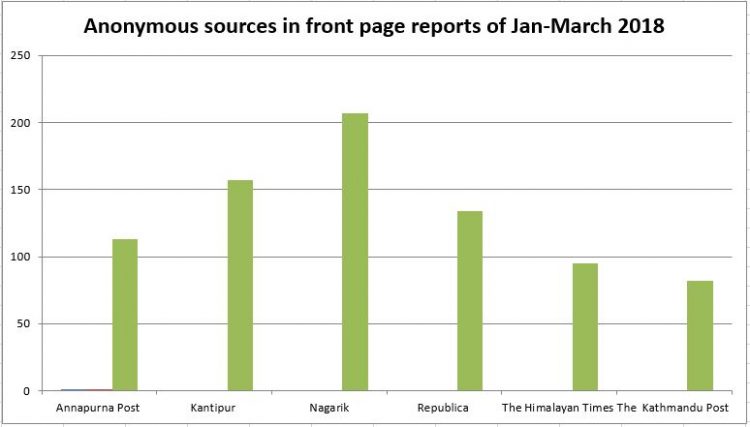
South Asia Check tracks the use of anonymous sources in the news reports published on the front pages of six leading national dailies of Nepal — Nagarik, Kantipur, Annapurna Post, The Kathmandu Post, Republica and The Himalayan Times. While the first three are Nepali language newspapers, the last three publish in English.
After Nagarik, the dailies using the most number of anonymous sources included Kantipur, Republica and Annapurna Post respectively. The Kathmandu Post used the least number of anonymous sources during the period. In the three months, it used 82 anonymous sources in its news reports.
During the three months, the front page reports of the six dailies used altogether 788 anonymous sources.
News reports related to politics get more priority in the newspapers in Nepal. Most of the news reports on the front pages of the newspapers were on politics. Anonymous sources were also mostly used in politics-related news reports (in 295 instances) during the period. The Himalayan Times and Annapurna Post were the first and second national dailies respectively using the highest numbers of anonymous sources in their news reports related to politics; The Himalayan Times used anonymous sources in 62 instances and Annapurna Post in 60 instances in such reports.
Corruption is the second topic in the Nepali newspapers where anonymous sources are used in highest numbers. During this period, anonymous sources were used in 110 instances in corruption-related news reports in the six newspapers. Nagarik had the highest numbers of anonymous sources in the corruption-related news reports. But it should also be noted that Nagarik published the highest numbers of corruption-related news reports on its front page during the period.
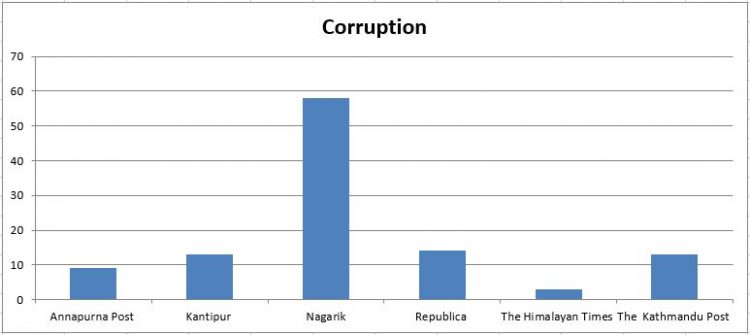
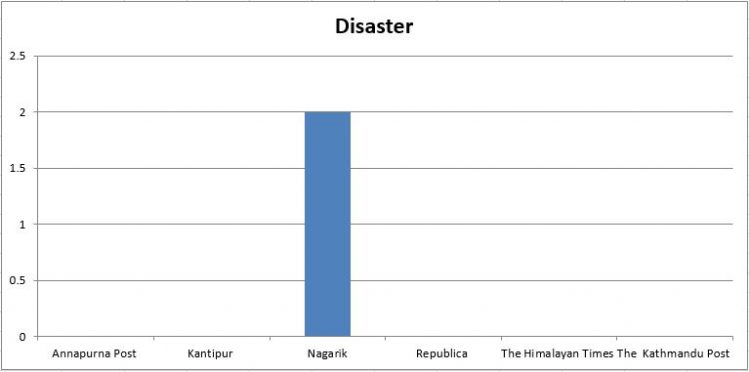
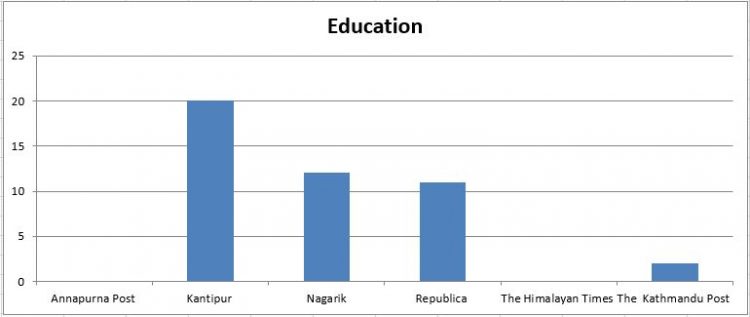
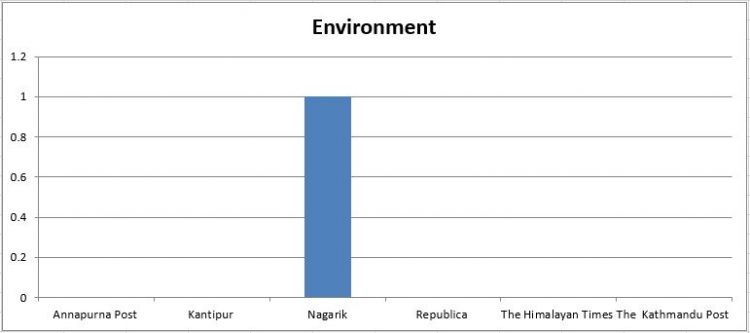
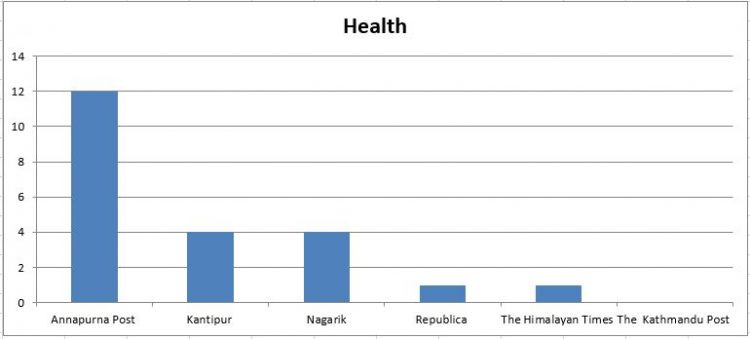
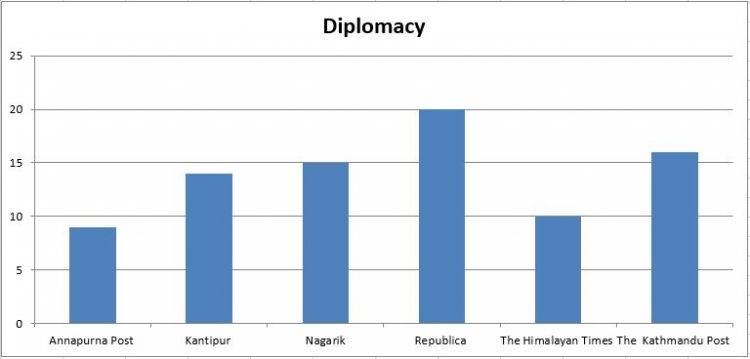
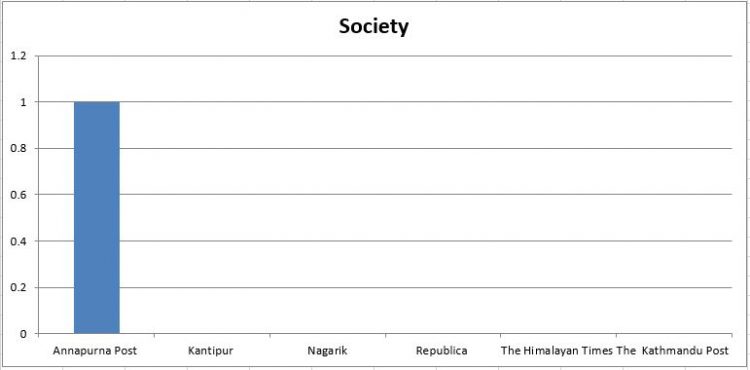
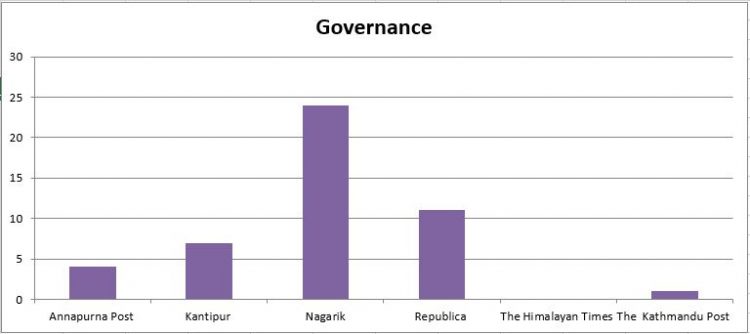
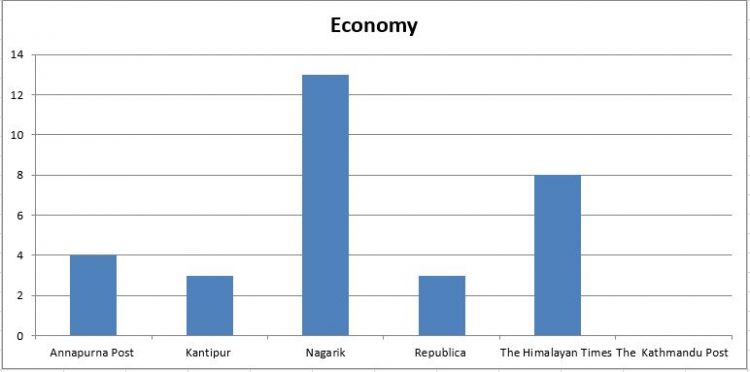
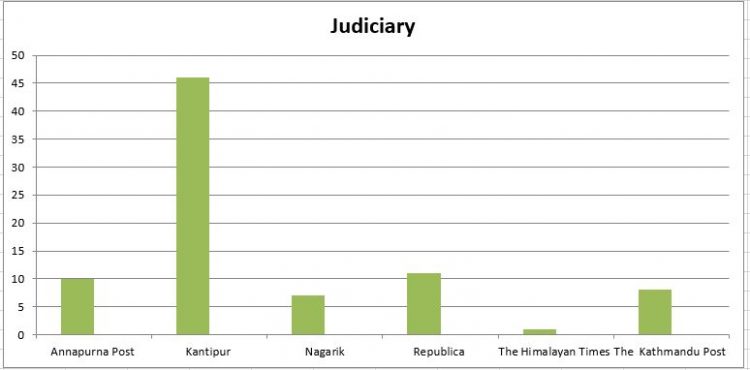
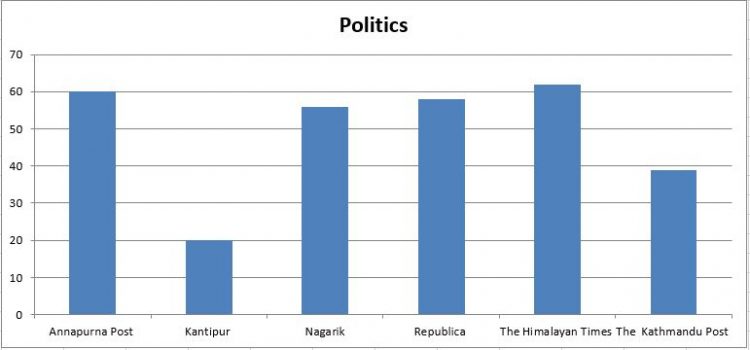
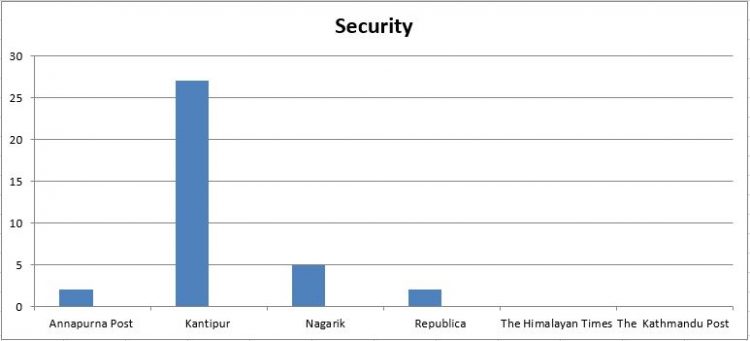
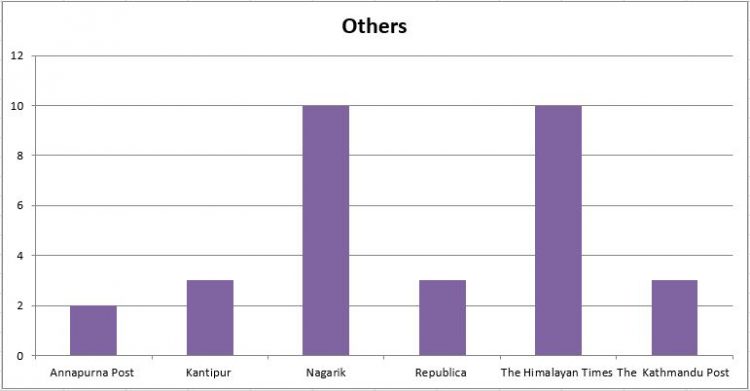
Quoting anonymous sources in news reports is normal. Regarding the use of anonymous sources in news reports, ‘Journalist’s Code of Conduct, 2016’ issued by the Nepal Press Council states the following:
“Source should be quoted for the reliability of the news. However, while quoting the source, the name and identity of such source should be kept confidential so as to avoid any serious damage to the source.”
The identity of news source should be protected only if revealing the source’s identity can cause serious harm to him/her. But some news reports published during this period have quoted anonymous sources even when there is no apparent need to do so.
For example, a report headlined “Federal parliament begins its five-year journey” published in a Nepali-language daily stated the following:
“Now that the new regulations [regarding the functioning of federal parliament] have been introduced, if the government starts bringing bills in parliament one by one, and the parliament, after necessary deliberations, passes the bills into law, then the country will achieve prosperity in the near future,” an official at Parliamentarian Secretariat said.
Another report headlined “Efforts will be made to energize SAARC” published in a Nepali-language daily stated the following:
“In the absence of political stability for a long time, not only Nepal, but many countries of the region, have been lagging a bit behind. But now all countries appear headed for stability,” a participant said quoting Oli, adding, “With the end of political transition, Nepal is also entering the phase of political stability through political stability. In this context, all the founding members of SAARC should join hands and work for development.”
“Another participant said that security [security of citizens of each other’s countries], direct flight, bilateral trade, cooperation in the field of culture, and people-to-people relations between two countries, were also discussed during the meeting.”
Similarly, another report headlined “Viral fever claims nine, including five children in a week” published in an English-language daily stated the following:
“According to sources, the outbreak has mostly gripped Juni, Chande, Kapra , Badkule, Karkigaun, Majhkot, Alimaugana, Dadakot and Parale villages in Junichande Rural Municipality.”
In these news reports, the use of anonymous sources looks unjustified because revealing the identity of news source would not cause any harm to the source.
Haphazard use of the anonymous sources diminishes the credibility of news reports and newspapers publishing such reports.
Click here to download the statistics prepared by South Asia Check on this issue.
This material is copyrighted but may be used for any purpose by giving due credit to southasiacheck.org.
Comments
Latest Stories
- In Public Interest Covid-19 cases are low, but that’s not an excuse to avoid vaccination
- In Public Interest What is BF.7, the sub-variant that has the world by its grip?
- In Public Interest Threat of a new Covid-19 wave looms large amid vaccine shortage in Nepal
- In Public Interest As cases decline, Covid-19 test centres in Kathmandu are desolate lot
- In Public Interest Dengue test fee disparity has patients wondering if they’re being cheated
- In Public Interest As dengue rages on, confusion galore about what it is and what its symptoms are. Here’s what you need to know
In Public Interest
 Covid-19 cases are low, but that’s not an excuse to avoid vaccination
The Pfizer-BioNTech bivalent vaccines authorised by the Nepal Government provide better protection a...
Read More
Covid-19 cases are low, but that’s not an excuse to avoid vaccination
The Pfizer-BioNTech bivalent vaccines authorised by the Nepal Government provide better protection a...
Read More
- What is BF.7, the sub-variant that has the world by its grip?
- Threat of a new Covid-19 wave looms large amid vaccine shortage in Nepal
- As cases decline, Covid-19 test centres in Kathmandu are desolate lot
- Dengue test fee disparity has patients wondering if they’re being cheated
- As dengue rages on, confusion galore about what it is and what its symptoms are. Here’s what you need to know